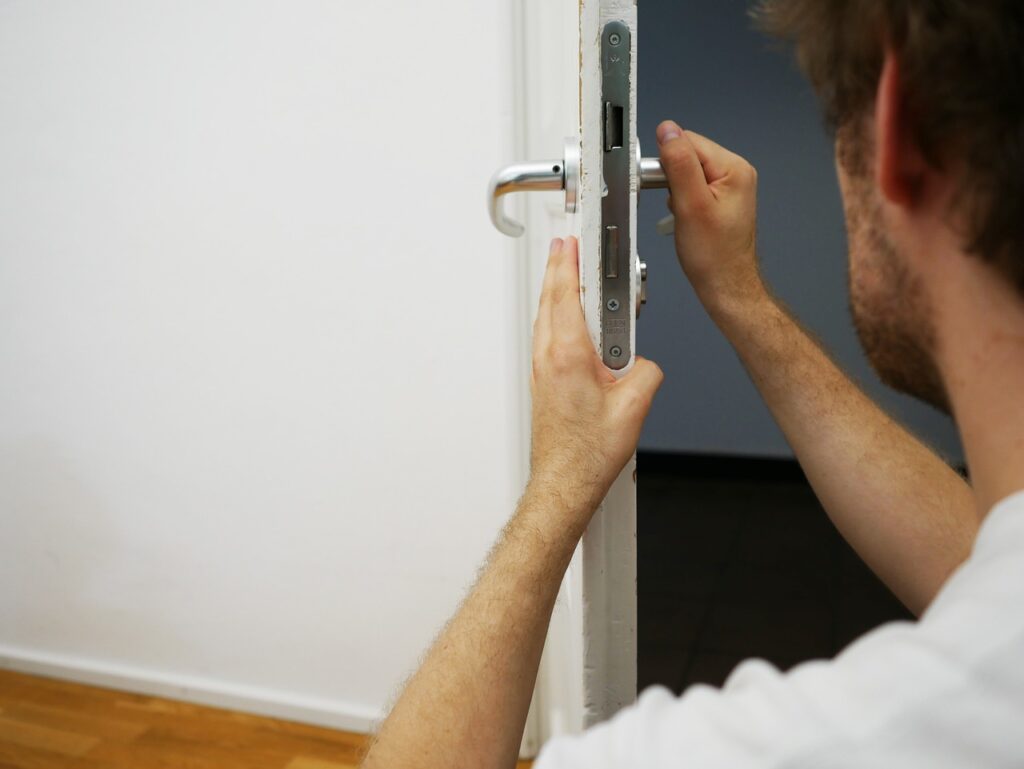Starting a locksmith business can be both exciting and rewarding. With the rising demand for security services in homes, businesses, and vehicles, the locksmith profession offers ample opportunities. Whether you’re interested in providing emergency services or specializing in security systems, the locksmith industry has a variety of paths for growth. In this guide, we’ll walk you through the essential steps of how to start a locksmith business.
| Step | Action | Purpose |
| 1 | Understand the Locksmith Industry | Learn market demand, services, and technology trends |
| 2 | Complete Training & Certification | Build professional skills and boost credibility |
| 3 | Choose Services to Offer | Decide on residential, commercial, automotive, or emergency locksmithing |
| 4 | Select Business Model | Choose between a mobile service or a physical storefront |
| 5 | Obtain Licenses and Permits | Stay legally compliant with local regulations |
| 6 | Purchase Tools and Equipment | Get key cutting machines, lock picks, and vehicles |
| 7 | Set Pricing Structure | Develop competitive rates for each type of service |
| 8 | Create a Business Plan | Outline goals, target market, and financial strategy |
| 9 | Market Your Business | Promote services online and locally to gain customers |
| 10 | Scale the Business | Expand offerings, upgrade tools, and grow your team |

Step 1: Understand the Locksmith Industry
Before diving into the practical steps of starting your business, it’s important to understand the locksmith industry. The locksmith business revolves around services like lock installation, key cutting, lock repairs, security system setup, and emergency services such as lockouts. The increasing need for better home, vehicle, and commercial security makes locksmithing an essential service, ensuring steady demand.
Key considerations:
- The industry is expanding due to increasing security concerns.
- Locksmiths serve both residential and commercial clients, which offers business diversification.
- Knowledge of new technologies like smart locks and digital security systems is increasingly important.
Step 2: Complete Locksmith Training and Certification
In order to provide professional locksmith services, training is essential. While not every state requires formal licensing, obtaining the proper certification can boost your credibility and skills. Training typically covers key cutting, lock installation, repairing broken locks, and advanced security systems.
| Training/Course Type | Description | Estimated Cost | Duration | Certification |
| Apprenticeship | Learn hands-on from an experienced locksmith. | Varies by mentor (often free or low cost) | Typically 1-3 years | No formal certification, but experience gained is valuable. |
| Locksmith Training Program | Formal courses are offered by locksmith associations like ALOA or local institutions. Includes both in-class and hands-on training. | $500 – $2,000 | 6 months – 1 year | ALOA Certified Locksmith (CML) or similar. |
| Online Locksmith Courses | Self-paced online programs focusing on various locksmith skills and technologies. | $200 – $500 | Varies (Typically 3-6 months) | Completion Certificate (varies by provider). |
| Certification Exam | Exams to become a Certified Locksmith through recognized bodies like ALOA. Required to prove knowledge and expertise. | $60 – $500 | Few hours to 1 day | Certified Locksmith (CL) certification. |
Step 3: Choose the Type of Locksmith Services You Will Offer
Locksmith businesses can be diverse. Some locksmiths focus on specific niches, while others provide a broad range of services. Common services include:
- Residential Locksmithing: Key cutting, lock rekeying, home security system installation, and lock repairs.
- Commercial Locksmithing: Installing and maintaining high-security locks, master key systems, and access control systems.
- Automotive Locksmithing: Car key duplication, transponder key programming, and emergency lockout services.
- Emergency Locksmith Services: 24/7 lockout assistance, rekeying, and lock replacement.
Selecting the appropriate services for your business is essential to its success. Many locksmith businesses offer a blend of these services, but it’s also possible to specialize in one area to differentiate yourself.
Step 4: Choose a Business Model: Mobile or Physical Location
You can operate your locksmith business physically or run a mobile service. Both models have their pros and cons.
Mobile Locksmith Business: A mobile locksmith service allows you to visit customers on-site. This business model is flexible, cost-effective (no need for a shop), and especially useful for emergency services.
Physical Location (Shop): Operating from a fixed location gives you the advantage of a storefront presence and could attract walk-in customers. You can also offer additional services like selling security systems and providing key duplication on-site.
Step 5: Obtain Required Licenses and Permits
Licensing requirements for locksmiths vary by state and even city. While some places don’t require a specific locksmith license, you’ll need to apply for a general business license to operate legally. Check out this article, “Do you need a License to start as a Locksmith?”.
Key requirements:
- Business License: A general business license issued by the state or county where you operate.
- Insurance: Locksmiths need to carry general liability insurance to protect themselves and their clients.
- Bonding: Some areas require locksmiths to be bonded to ensure protection against potential negligence.
| License/Permit | Estimated Cost | Required for |
| Business License | $50 – $150 | All businesses, including locksmith services. |
| Locksmithing License | Varies by city/state | If mandated by the state or city. |
| Insurance (Liability) | $300 – $1,000 annually | Mandatory for most locksmith businesses for protection. |
| Bonding | Varies by city/state | Required by certain jurisdictions. |
| Background Check | $50 – $150 | Required for licensure in certain areas. |
| Vehicle Permit | $100 – $500 (if applicable) | Required for mobile businesses. |
Step 6: Purchase Tools and Equipment
The next step is to invest in the tools and equipment necessary for the business. These tools range from basic key cutters to more specialized equipment for advanced lock systems. Below is a general list of equipment you’ll need:
| Item | Estimated Cost |
| Key Cutting Machines | $300 – $1,500 |
| Lock Picking Set (basic) | $50 – $200 |
| Mobile Van (for mobile service) | $10,000 – $30,000 |
| Key Duplication Machine | $200 – $1,000 |
| Drills and Advanced Lock Tools | $100 – $500 |
| Security Equipment (for high-security systems) | $500 – $3,000 |
Step 7: Set Your Pricing Structure
When setting your pricing structure as a locksmith, it’s essential to find a balance between competitive rates and fair compensation for your skills and services. Begin by examining the local market to understand the rates other locksmiths in your area are offering for comparable services. Consider factors like the type of service you provide (residential, commercial, automotive, etc.), the complexity of the job, and the time involved.
Example Pricing:
- Emergency Lockouts: $50 – $150 depending on the time of day (night and weekend services are usually more expensive).
- Key Cutting: $2 – $10 per key.
- Rekeying a Lock: $15 – $50 per lock.
Step 8: Create a Business Plan
Writing a business plan will help you outline your goals, services, target audience, and financial projections. A business plan is essential when applying for loans or securing investors. It will also serve as a roadmap for the first few years of your business.
Business Plan Components:
- Executive summary
- Company description and services
- Market research and competitive analysis
- Marketing strategies
- Financial projections and budget
Step 9: Market Your Locksmith Business
Once your business is ready to launch, you need to make it known to potential customers. Use social media platforms like Facebook, Instagram, and Twitter to engage with your community and showcase your expertise. Share useful tips, success stories, and promotions that highlight the value of your services. Here are several marketing strategies that can boost your visibility:
- Build a Professional Website: Ensure it’s optimized for SEO (search engine optimization), so potential customers can find you when searching for locksmiths in your area.
- Create Online Listings: Get listed on Google My Business, Yelp, and local directories.
- Use Social Media: Build a presence on platforms like Facebook and Instagram, and engage with your community.
- Flyers and Local Advertising: Advertise in local newspapers, magazines, or bulletin boards in high-traffic areas.
Step 10: Scale Your Business
As your locksmith business grows, you may want to hire additional locksmiths or expand your service area. You can also branch out into specialized services, like automotive locksmithing or high-tech security systems, to further grow your client base. Here are some ways:
Expand Service Offerings: Diversifying your services can attract a wider customer base. Consider offering more specialized services such as key fob programming, safe installation, or smart lock systems. You could also explore offering 24/7 emergency locksmith services or even expand into commercial and automotive locksmithing.
Invest in Tools and Technology: Upgrade your equipment and tools to keep up with the latest industry trends and increase productivity. Investing in modern technology, such as mobile locksmith software, can streamline your business operations, from managing appointments to tracking inventory.
Build Strong Relationships with Clients: Customer retention is just as important as acquiring new clients. Offer loyalty programs, discounts, or regular check-ups to keep your existing clients coming back. Positive customer referrals are extremely helpful for growing your locksmith business.
Monitor Financials and Adjust Strategies: As your business grows, keep an eye on your financials to ensure profitability. This includes managing cash flow, tracking expenses, and reinvesting profits into the business. Review your strategies often and make changes based on current market trends and customer input.
Conclusion
Starting a locksmith business can be a rewarding venture, but like any business, it requires proper planning and execution. By following the above steps, obtaining the necessary training, licensing, equipment, and marketing, you’ll be on your way to establishing a successful locksmith business. Whether you choose to operate from a shop or as a mobile service, the key to long-term success is offering reliable, professional services and building strong customer relationships.







